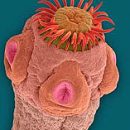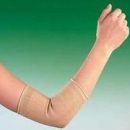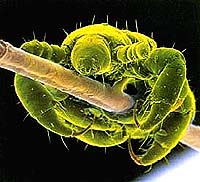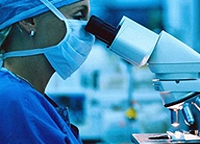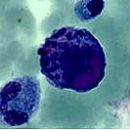A group of tropical gelminths caused by seashers - schistosomes. The disease is characterized by the defeat of the urogenital system, intestines, liver and other organs, depending on the causative agent.
Content
Sources of infection
Source
The causative agent of invasion (infection) with all types of schistosomoz is infected
man, and with Japanese, in addition, domestic and wild animals (cows,
Goats, Horses, Pigs, Dogs, Cats, Rodents).
Ways of contamination of schistosomozoa
In the human body, they penetrate when bathing in open water bodies, directly through the skin.
Forms of existence
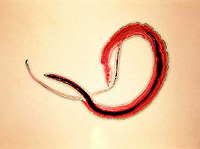
Saintosomes
(blood losers) dwell and mate in venous blood. Vital
The cycle of the pathogen is characterized by changing two owners. In small
Blood vessels of the final owner – man and mammals –
The female postpones up to 3000 eggs per day. Eggs are in the intestines or
The bladder and feces or urine are outlined into the environment.
Eggs of schistosomes, thanks to spike, can independently move
through the walls of the vessels in the bladder or intestine and then highlighted with
urine or kaloma. In a fresh water reservoir, Miracidia come out and fall
in the organism of the intermediate host – mollusk specific for
each type of schistos, where their further development occurs.
After 4
The weeks after the introduction in the body of the mollusk ripen tailed larvae –
Cerciria. They go into the water, where when meeting with the final owner
introduced through skin or mucous membranes. In subcutaneous tissue
Churcarians turn into a pinchosomula that fall into the blood
vessels and after 20-30 days reach sexual maturity. Duration
The life of schistosomes in the human body is decades.
Symptoms of schistosomoza
- The duration of the acute stage – from 2 weeks to 3 months. Implementation B
Skin of churches sometimes causes a local inflammatory reaction (itching
bathing bags). After 3-8 weeks, fever arises, rash, head
Pain, skin itching increases, bronchitis appears with asthmatic
component, the liver increases, encephalitis is possible and
Meningoencephalitis. In laboratory blood tests, leukocytosis is observed and
Eosinophilia.
- Specific manifestations of disease develop in the chronic stage.
Under the urogenital schistosomoz after 3-6 months after infection
There is a rapid painful urination, pain occurs in
suplocked area and in the crotch, since on the mucous membrane
urine bladder formed ulcers. In the later stages, the disease is complicated
hydronephrosis and pyelonephritis, and the genitals are affected – W
women are manifested in the form of color, erosion and cervical polyps,
Men – in the form of epidimitis, prostatitis, vesiculitis.
-
In the intestinal schistosome of Manson, the main manifestations are related to
By the defeat of the distal colon: liquid stools with an admixture
mucus and blood alternating with constipation, pain in the abdominal abdominal
or Magnifying Character. Japanese schistosomoz resembles intestinal, but
Leaks harder.
The consequences of parasitization in the body
Migration
Pinsomulum on the blood and lymphatic vessels and various organs,
injures fabrics and causes their defeat. As a result of damage
Tissues develop inflammatory proliferative processes around eggs,
Holded in the tissues, granulomas are formed, which causes a number of heavy
lesions of the organs, up to cancer, develops anemia due to
Bleedings of affected organs – bladder, intestines,
liver. Shistosomes are able to destroy antibodies and suppress macrophages,
What makes an adult sex almost invulnerable. Thus,
the host's body, remaining infected with a piniony, becomes
Resistant to re-infection, recturates
immunity.
Methods of diagnostics of schistosomoz
Diagnosis
Install on the basis of a clinical picture, data
Epimidiological Anamnesis, Laboratory Research Results.
The most reliable is the discovery of eggs in the urine sediment, in the case of
Urinary Schistosomoz. The basis of the diagnosis of intestinal schistosomosis
Lies to the identification of eggs Schistos Manson in feces. With all forms
Saintosomoz as pre-diagnostic methods use
Immunological tests.
Treatment of schistosomozia
Treatment
carried out according to the scheme as at opistorhoz. In the acute period of treatment
Desensitization and deoxilization. Glucocorticoids
Apply according to testimony only during the severe number of schistosomosis.
Prevention of schistosomoza
Prevention
includes a set of activities aimed at early detection and
Treatment of patients, the destruction of intermediate hosts – Mollusks,
Hygienic education of the population. Great importance is sanitary
Improvement of populated areas. People living or vacationers in
endemic regions should be warned about danger of infection
When bathing in freshwater reservoirs, driving barefoot on coastal
Grass. Prevention of this disease lies in binding for swimming
In the natural reservoirs of tropical countries, as the infection is 100%
Cases occasionally occasionally occasionally when driving barefoot on water.

